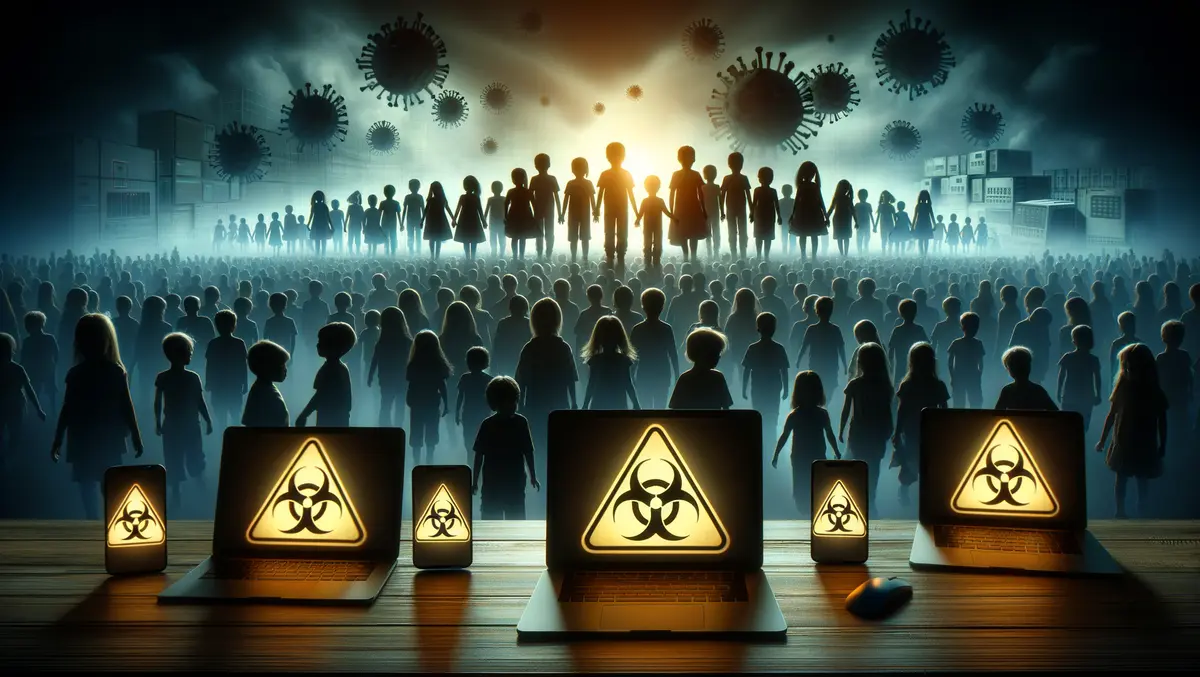
Over 300 million children face online sexual abuse annually
A new global estimate reveals that over 300 million children are subjected to online sexual abuse and exploitation annually.
This comprehensive study, conducted by the Childlight Global Child Safety Institute at the University of Edinburgh in collaboration with Professor Michael Salter of UNSW Sydney, underscores a growing global public health crisis.
According to the report, which is the first of its kind, files containing sexual images of children are reported once every second, with over 200 such cases reported daily in Australia alone. The statistics paint an alarming picture of a hidden pandemic affecting pupils in every classroom, in every school, and in every country.
The study indicates that 12.6% of the world's children, approximately 302 million young people, have been victims of non-consensual taking, sharing, and exposure to sexual images and videos in the past year. Additionally, around 300 million children have experienced online solicitation, including unwanted sexual talk, non-consensual sexting, and unwanted sexual act requests by adults or other youths.
Childlight CEO Paul Stanfield, a former senior officer for the UK's National Crime Agency, highlighted the severity of the issue in Australia. He noted that the country alone has approximately 700,000 male offenders, a number sufficient to fill the Gabba stadium in Brisbane 17 times over. Stanfield emphasised the need for urgent action to address this problem, stating, "Child abuse material is so prevalent that files are, on average, reported to the five main watchdog and policing organisations more than once every second."
Grace Tame, the 2021 Australian of the Year and a survivor of childhood sexual abuse, described the findings as indicative of an escalating global crisis. Tame, now the executive director of the Grace Tame Foundation, related her personal ordeal, revealing how her high school maths teacher groomed and repeatedly raped her using fake Facebook accounts. "Like countless child sexual abuse victim-survivors, my life was completely upended by the lasting impacts of trauma, shame, public humiliation, ignorance, and stigma," Tame recounted.
The United States was identified as a particularly high-risk area, with 23% of children there reporting being victims of non-consensual taking, sharing, and unwanted exposure to sexual images and videos in the past year. Additionally, a significant number of men in the US, UK, and Australia have confessed to online sexual offending against children, with 7.5% of men in Australia, 7% in the UK, and 11.1% in the US admitting to such actions at some point in their lives.
Regional disparities were evident, with the Middle East and North Africa having the highest rate of CSAM (child sexual abuse material) reports per head of population. North America and Western Europe followed closely behind. Eastern Europe, Central Asia, Eastern and Southern Africa, and East Asia and Pacific regions also reported significant levels of online sexual exploitation and abuse.
Professor Michael Salter, director of the new Childlight East Asia and Pacific hub at UNSW, attributed the exacerbation of the problem to the COVID-19 pandemic. He advocated for treating child sexual exploitation and abuse as a global health emergency akin to the coronavirus. "By shining a light on the extent as well as the nature of child sexual exploitation and abuse, it is our hope that this research can be a catalyst for change to keep children safe," Salter stated.
Professor Debi Fry from the University of Edinburgh, who led the Childlight project, stressed the urgent need for global awareness and action. She stated, "These aren't harmless images: they are deeply damaging, and the abuse continues with every view and the failure of taking down this abusive content."
Stephen Kavanagh, executive director of Interpol, called for enhanced global cooperation, including specialist investigator training, better data sharing, and improved equipment to effectively combat this growing threat.
The Childlight report, based on an analysis of 125 studies and over 36 million reports, marks a significant step towards understanding and addressing the pervasive issue of online child sexual abuse and exploitation.


